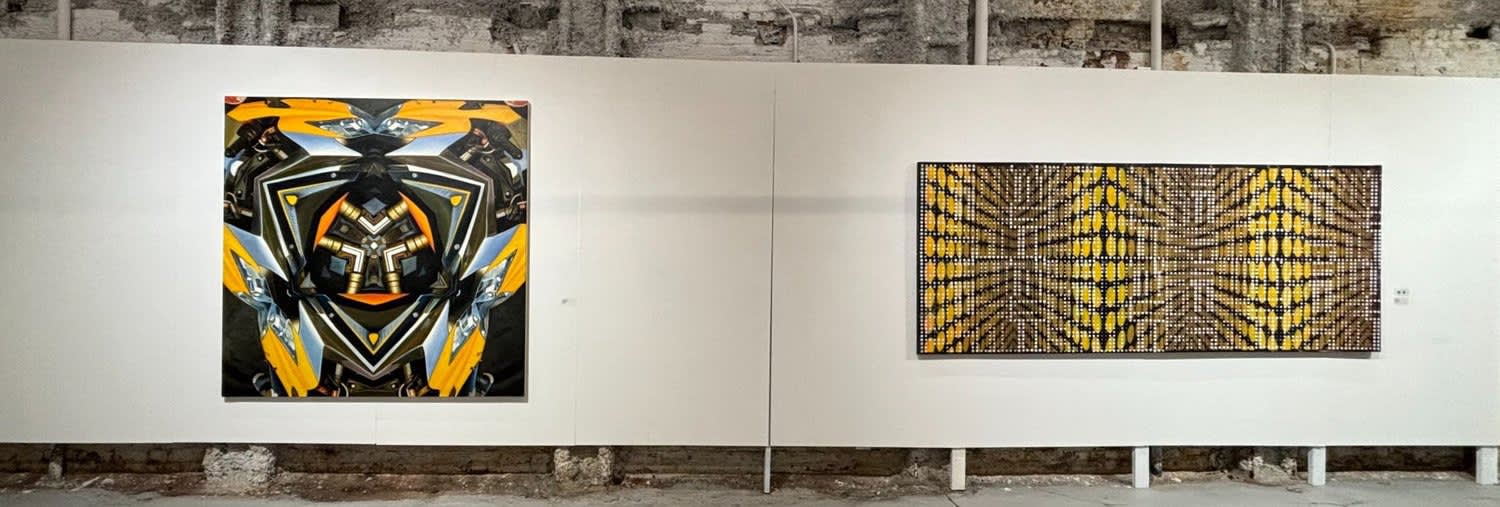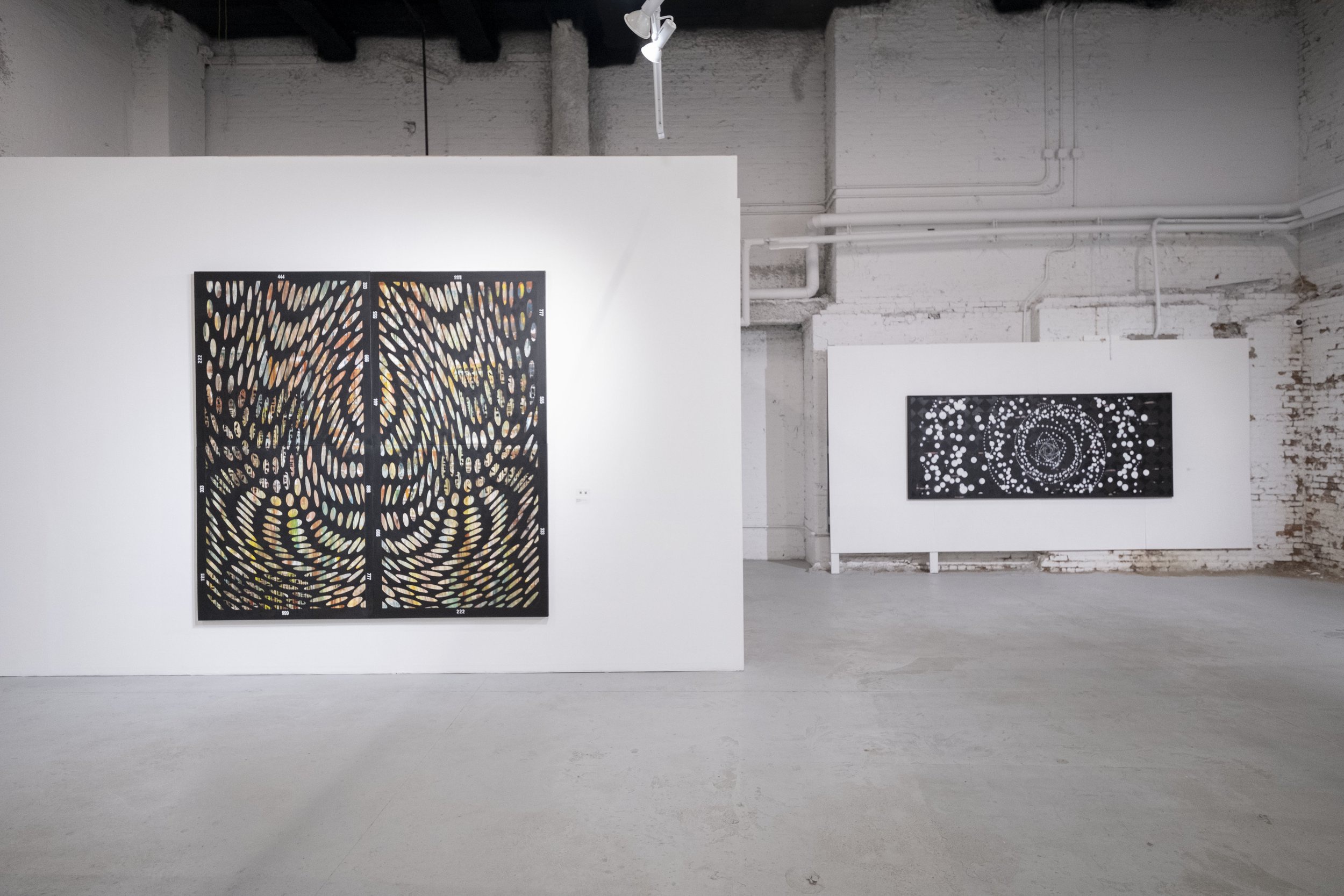Afrofuturism and Beyond
Ethan Cohen Gallery
May 22–June 28, 2025
New York
Algernon Miller’s prolific, genre-defying art practice has been a journey across space and time. I remember listening to him one day at his place on Central Park North in Harlem, learning about his time at Slugs’ Saloon with Sun Ra, Vertamae Smart-Grosvenor, and June Tyson. He lived downstairs from Allen Ginsberg. At the 1964 World’s Fair, he met Babatunde Olatunji at the African Pavilion. Miller designed the first (unbuilt) museum indebted to the subject of US chattel slavery, the De-Tom-O-Tron Complex, in 1993, which was inspired by Sun Ra, Marcus Garvey's Pan-Africanism, and from Frantz Fanon. He was also the architect of Frederick Douglass Circle, the “Gateway to Harlem” on the northwest corner of Central Park, and Tree of Hope (1971) on Adam Clayton Powell Jr. Boulevard. This list could go on and on.

Installation view: Algernon Miller: Afrofuturism and Beyond, Ethan Cohen Gallery, New York, 2025. Courtesy Ethan Cohen Gallery.
A survey of Miller’s expansive oeuvre that stretches back to the 1970s through today is on view at Ethan Cohen Gallery—Afrofuturism and Beyond, in the downstairs gallery. That exhibition is accompanied by another show in the upstairs gallery curated by Miller and Ethan Cohen, Afrofuturism, whichjuxtaposes Miller’s paintings with work by his contemporaries Ellsworth Ausby, Nanette Carter, Renee Cox, Ernest Frazier, Tyrone Mitchell, and Joe Overstreet. Ausby’s untitled acrylic on wood contribution, from the artist’s meditation series, for instance, features distinct patterns, colors, and shapes that immediately conjure the plan Miller designed for Frederick Douglass Plaza. Dick Griffin, a member of Sun Ra’s Arkestra since the sixties, played at Ethan Cohen Gallery for the opening of Afrofuturism and Beyond, testament to Miller’s pivotal role in shaping Afrofuturism the past five decades. Grouped together, we can see how art and music inform architecture, but also the seedlings of the Afrofuturist movement itself when it was in its nascency.
The exhibition is a window into a time when Miller, Ausby, Ishmael Reed, Ernest Frazier, and many others were still figuring out what Afrofuturism was, as pioneers of the avant-garde movement. Reflecting on that time, Miller said:
"When I moved to 170 E. 2nd St. after leaving art school I was surrounded by Beat poetry, jazz, and that was cool, but I really resonated with Sun Ra’s Space Music. His music somehow complimented the research that I was already involved in uncovering what I termed our antecedent heritage. I was exploring not only Egypt, African art and history, but also what I interpreted as a kind of spiritual science embedded in the language and the mythology in the so-called hieroglyphs. This led to the creation of some early sculptures, made of wood, reflective metal and paint that I called anthropomorphic spaceships, and other experiments with colored lights in paintings."

Installation view: Algernon Miller: Afrofuturism and Beyond, Ethan Cohen Gallery, New York, 2025. Courtesy Ethan Cohen Gallery.
At Ethan Cohen Gallery, sculptures made of metal coils by Miller coalesce near his later, more metaphysical, kaleidoscopic paintings dedicated to Sun Ra, among other themes. Miller’s foray into metaphysics and Egyptian cosmology created a rupture in time for him between Afrocentrism, and Afrofuturism. Nineteenth century quilt patterns from the Underground Railroad, fractal generating software, semiotics, and clandestine codes permutate his paintings and architecture, demanding a close reading. These works are beautiful on their own but, with additional context, they verge on the realm of high spirituality; there’s something cosmic happening here. “I didn’t really realize the distinction between the two, Afrocentrism and Afrofuturism, albeit a fluid one, until recently,” Miller elaborated. “Today in art history people are talking about what darkness represents. Historically, European artists have pushed the light, and that ‘light is white,’ and darkness supposedly represents evil. Total madness. We’re finally starting to come out of that.”

